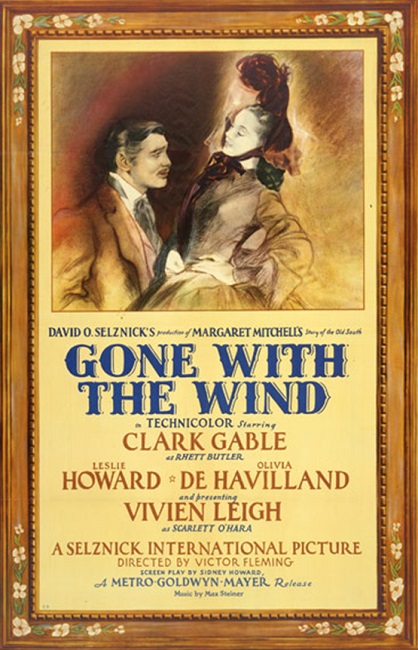




Gone With the Wind – 1939
Sometimes, the best special effects are the ones that you don’t know are there. Everybody knows the movie Gone with the Wind because it is one of the highest grossing films of all time. They know its iconic characters. They know its timeless romance. And they know that it took home the Oscar for Best Picture in 1939.
One of the things that made the effects in the movie really stand out is that they were in color. But what many people don’t know is that there were color films as far back as 1903. The first movie to use the new Technicolor process was a film called The Gulf Between in 1917. Song of the Flame was the first feature length feature to be filmed entirely in Technicolor, and that came out in 1930.
Gone With the Wind was a major Selznick International Pictures production, and it had a great many special effects that were seamlessly constructed. One of the things that always catches my attention when I watch the movie are the beautiful skies and landscapes that dazzle the senses and give the story a feeling of lush grandeur. Most of those glorious color vistas were created using rear projection.
These backdrops were often blended with fantastic matte paintings that expanded the images, allowing the cinematographers to give us all those beautiful wide shots. But when you are watching the movie, your eye is naturally drawn to the action, even if it only takes up a small portion of the screen. Sometimes, the long line of houses that fill both sides of the screen and the massive mansion at the end of the road don’t even register. Of course, the shot would be different if they weren’t there, and the sense of scale the director was going for would be completely lost.
The shot that I am describing is the part in the film where a Confederate soldier is riding his horse down the middle of a long street, and Scarlett runs out to stop him. The live action was obvious, the houses and the mansion were matte paintings, and they were blended together into one impressive shot that only lasted a few seconds. It never occurred to me that so much of the shot was just a painting.
And then there was the amazing burning of Atlanta sequence. There were only a few shots where Rhett and Scarlett are shown in closeup as they are fleeing in the carriage, in which the rear projection didn’t seem to be part of the same image. But aside from that, the burning city, the collapsing buildings, the rain of fiery debris, and the exploding ammunition, all made for an exciting scene. Apparently, the burning buildings, filmed on the studio backlot, were the remnants of sets that had been constructed for past films, which had false fronts put in front of them.
And one last thing I noticed. There is a little scene in which Scarlett and Melanie are comforting an unseen soldier. Watch their giant shadows on the wall behind them. The shadows don’t move correctly with the actresses! Why, I ask. Why?